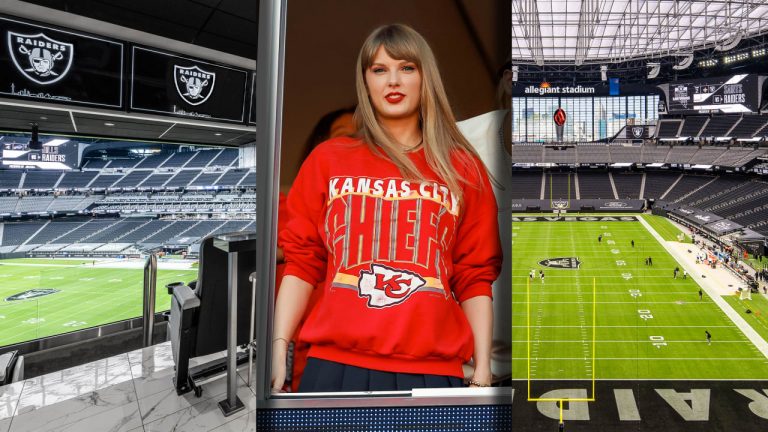
As Taylor Swift fans around the world frantically try to calculate if and how she’ll be able to make the trip from a concert in Japan on Saturday, February 10, to Las Vegas for the Super Bowl on Sunday, February 11, a more consequential question looms: Where will she sit?
For the pop star’s fans, for football-agnostic television viewers, and especially for camera operators inside stadiums, Swift’s attendance at NFL games this season to watch her football player boyfriend Travis Kelce has been a cultural phenomenon. When Kelce’s Kansas City Chiefs play in this year’s Super Bowl and Swift is in the audience at Allegiant Stadium in Las Vegas, it will be the rare convergence of the country’s most-watched TV program and one of its most famous performers. Action in the stands may be just as interesting to some viewers as what happens on the field, and where Swift sits could shape the experience for tens of millions of people who tune into the game. The architects behind Allegiant Stadium think they know where that will be.
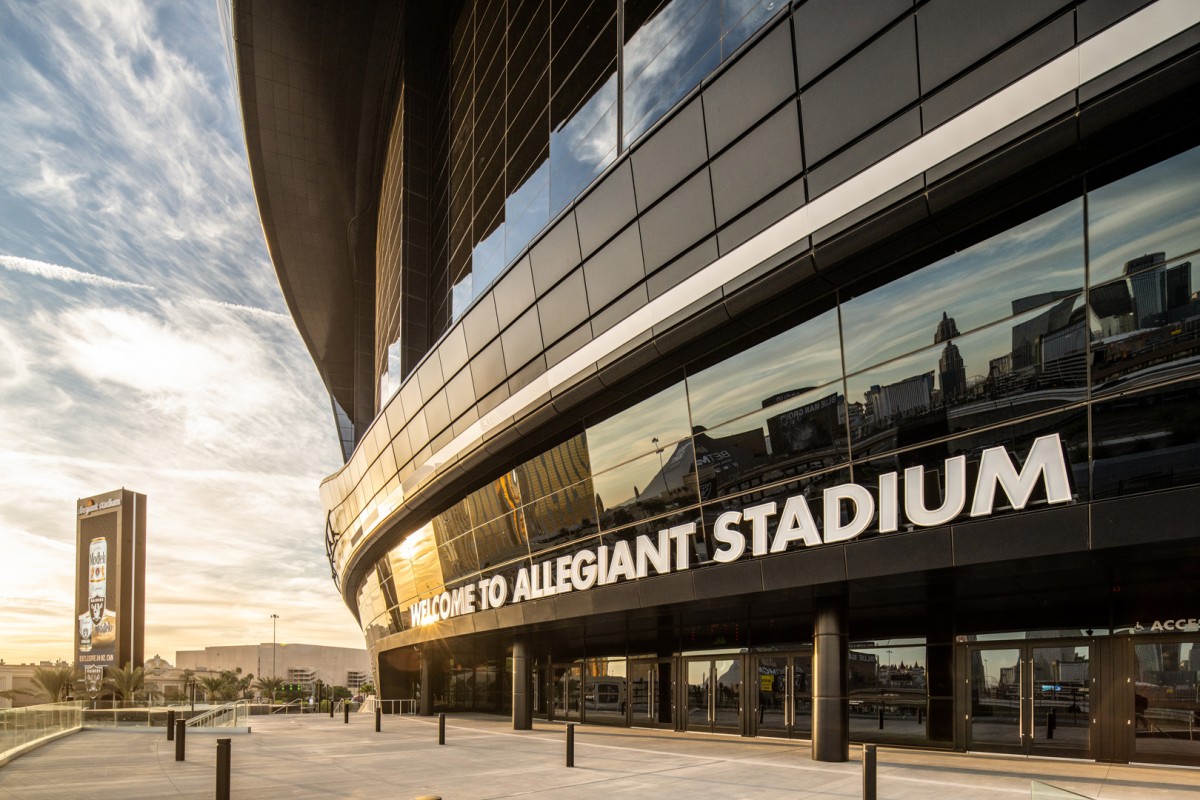
[Photo: Jason O’Rear/courtesy Manica Architecture]
“I suspect she’ll end up in a typical suite,” says David Manica, whose firm, Manica Architecture, designed the stadium in conjunction with global architecture and engineering firm HNTB. With a 20-person capacity and 12 open-air seats overlooking the field from about halfway up the stands, this type of suite will be familiar to anyone who’s seen zoomed-in camera shots of Swift watching previous NFL games.
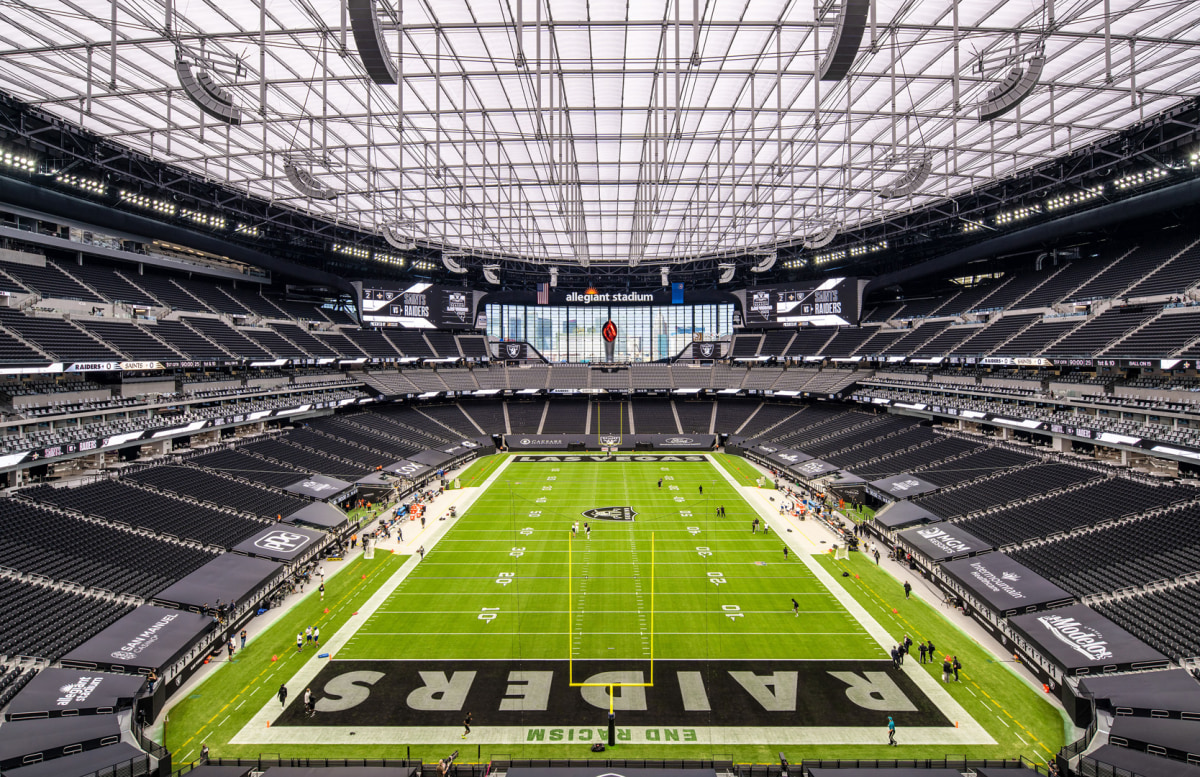
[Photo: Jason O’Rear/courtesy Manica Architecture]
But don’t let that “typical” label throw you, says architect Lanson Nichols of HNTB. Allegiant Stadium was designed specifically for the Raiders football team and opened in 2020, making it one of the newest facilities used for NFL games. Its premium offerings “moved towards much more diversification” than stadiums of the past, Nichols says, noting that the design features a range of premium and luxury spaces, including mega suites, party suites, mini suites, low-capacity loge boxes, and, of course, the “typical” suites. Inside, these spaces are a step up from the sterile, corporate office-park vibe of older stadiums.
“They’re called suite boxes because it’s basically like a shoebox,” Manica explains. “It’s got rectangular walls, there are a handful of amenities in there, and they back up to the seats. We wanted to break that a little bit.” Manica’s design introduced a trapezoidal jog in the walls, turning the standard box into an angled room with distinct three-dimensional spaces. Inspired by the staggered layout of sleeper seats on long-haul flights, the rooms’ angled bumpouts add variety to the suite experience for frequent patrons like Swift.
“It doesn’t feel like a box at all. It feels more dynamic. It’s more interesting,” Manica says. “I dare say it’ll be one of the more interesting suites that she will have ever seen.”
Not just a seat in a suite
The facility’s overall design will play a bigger role in Swift’s Super Bowl experience than where she sits. Among Allegiant Stadium’s unique elements is its movable turf tray, which slides the entire grass playing field outside of the enclosed stadium and into the open air to help the grass grow. Like an ejected VHS tape, the tray rolls out through a slot beneath the stands at one end zone. That slot is essentially an empty zone in the building, but not wasted space, as Swift is likely to discover.
“That becomes a secure area for parking. I’m 3,000% confident that Taylor Swift’s bus or entourage or whatever will be swept for security at the gate, drive down the ramp, and park in that area,” Manica says. “So she will not be entering the building in any way from the outside. She’ll be in her car, as will all the other VVIPs.”
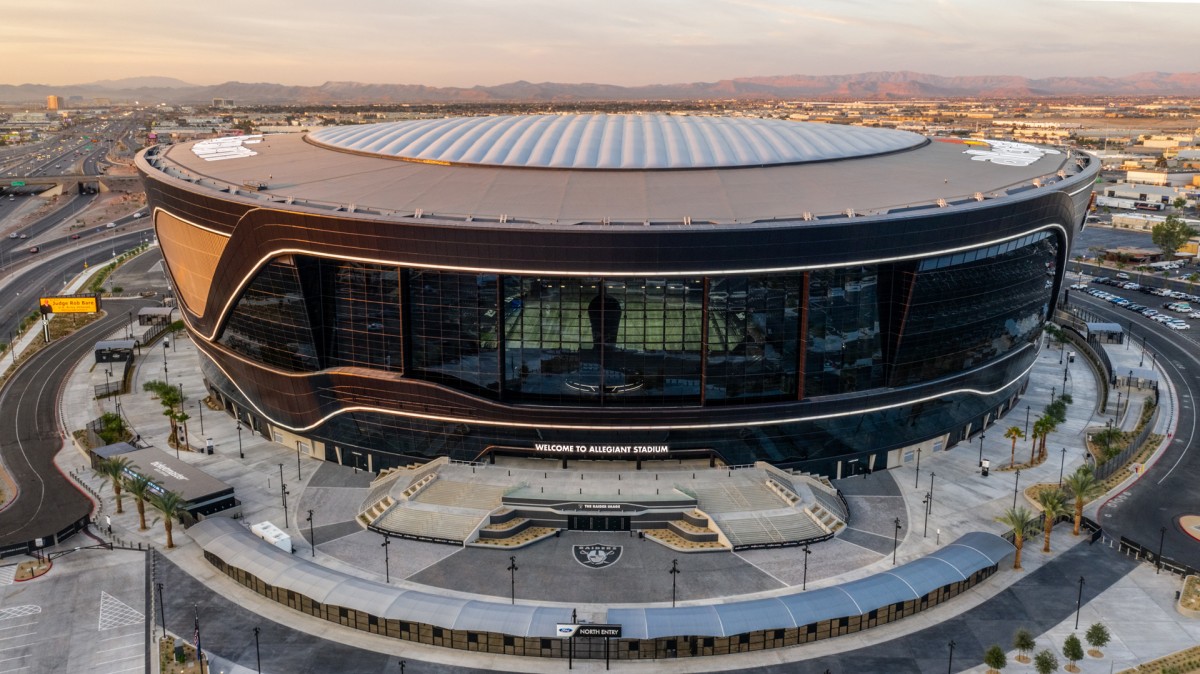
[Photo: Jason O’Rear/courtesy Manica Architecture]
After all, he says, this will hardly be the first Super Bowl attended by high-profile guests. Stadiums and arenas frequently host famous and important people, from movie stars watching an NBA game courtside to politicians accepting presidential nominations. “That building’s going to be full of super celebrities, and that has been considered as part of the design for path of travel and ensuring that it’s a controlled environment,” Manica says. “Taylor Swift will not be the only most important person there.”
Once inside the building, Swift will enter an elevator up to the suite level of the stadium. But here’s where things get a bit unconventional. Many stadiums have direct and secured paths to suites, enabling people to get from entry gate to seat without encountering any non-elite attendees. Allegiant Stadium, which was designed under the close watch of Raiders owner Mark Davis, does not have a fully isolated path of travel. Davis—who’s known for driving a Dodge Caravan, regularly dining at P.F. Chang’s, and flying low budget on Southwest Airlines—opted not to have a private elevator take him from the event level up to his suite.
“He was comfortable jumping from the elevator across a corridor and into the suites,” Manica says, creating the opportunity for unfiltered interactions with the Raiders’ colorful fans. “There is no direct access from an elevator bay to the suites.”
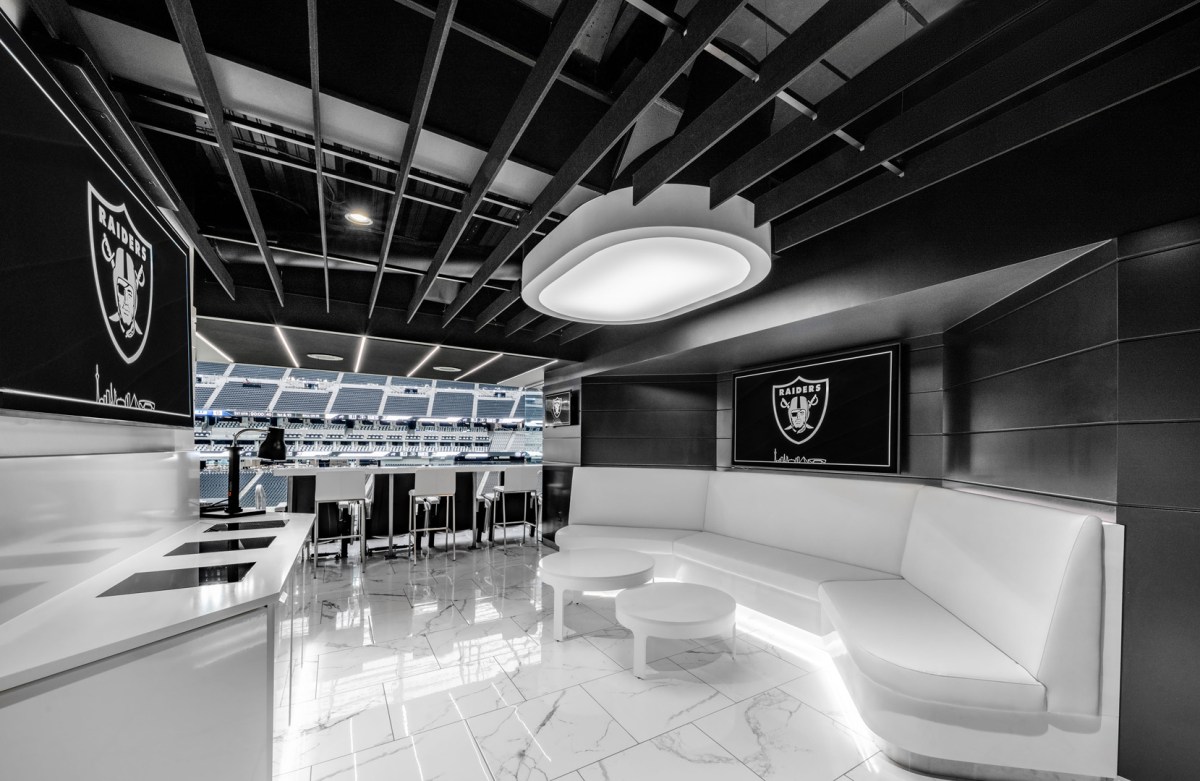
[Photo: Jason O’Rear/courtesy Manica Architecture]
That means that any other person of note attending a game or event, whether a billionaire or a pop star or a billionaire pop star will have their own potential intersection with at least some of the masses. “There will come a moment when Taylor Swift is ushered across a suite lounge to get from the elevator to the private box,” Manica says.
A red carpet opportunity
For the vast majority of people watching the Super Bowl, in person or on TV, all of this will happen out of view, as it has basically forever. Bill Johnson is design principal for sports, recreation, and entertainment at the architecture firm HOK, where he’s designed dozens of professional sports venues. He says stadiums have always had backdoor ways to get a president or a movie star from the gate to their suite with as little interaction with regular people as possible. They arrive in loading docks, ride on golf carts through back-of-house staff areas, and are ushered by a throng of security into elevators and through suite doors like a rubgy ball in a scrum.
“Stadium operators don’t have a very good way to bring someone in in a comfortable fashion,” he says. The whole experience of just getting into a sports venue or an entertainment venue of any kind needs to be completely rethought.”
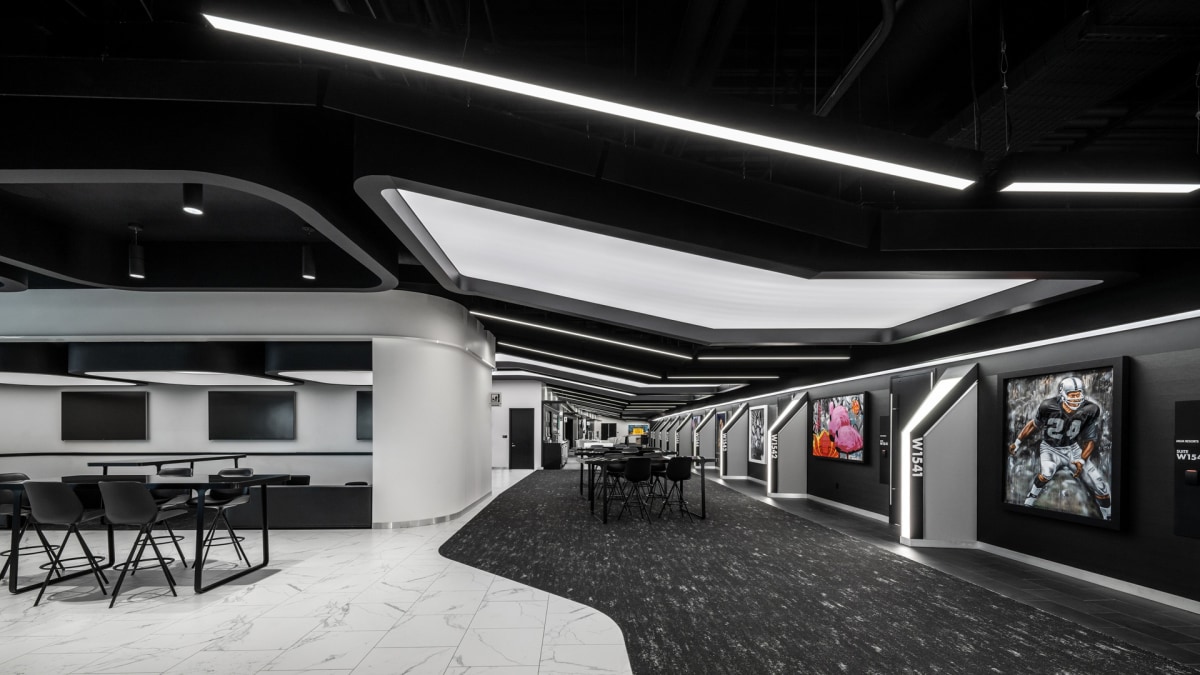
[Photo: Jason O’Rear/courtesy Manica Architecture]
Swift’s appearance at NFL games—and the corresponding boost in game viewership and audience diversity—has led Johnson to believe that hiding VIP spectators away is a huge missed opportunity. “Think about it as a red carpet event instead of a sneaking-in-the-loading-dock event,” he says. “The whole point of coming to a live event is getting to see things that you don’t get to see at home. So why would we not come up with a way to curate the arrival of a VVIP like Taylor Swift in a way that is comfortable for her, secure for the venue, but also allows some kind of level of fan interaction?”
Johnson, whose firm is currently working on an NFL stadium project in Jacksonville, Florida, says stadiums need to be designed with new types of spaces to enable the kind of fan interaction or spectatorship seen during Swift’s NFL appearances. It could be a secured walkway leading from VIP parking to the stadium where fans can line up and snap photos, or a post-game interaction zone where players can sign autographs.
“Players may hate this, coaches may hate this, and franchises may not like it, but I’m telling you what the fans want,” Johnson says. “If you have that red carpet moment for a talent like Taylor Swift, then why wouldn’t you have the red carpet moment for the players themselves. I think Travis Kelce has showed all of these football players that there is some value in being more accessible to your fans.”
That could also translate into an A-lister’s seating once they get into the venue. “They don’t have to be in the suite level. The reason they’re in the suite level is because that’s the only place they can be right now,” Johnson says. He suggests that stadiums could design premium or even secured spaces in other parts of the stadium where a high-profile person can watch a game beyond the glare of the crowd, and possibly even out of sight of broadcast cameras. “Maybe we need a different space in the building that you can interact with in a more selective way.”

[Photo: Jason O’Rear/courtesy Manica Architecture]
A ‘Swift effect’ on stadium design
For this year’s Super Bowl, the stadium’s state-of-the-art facilities may be an enhanced experience for the likes of a celebrity like Swift. But once she’s in the suite, the game may play out just like any other Chiefs matchup this season, with Swift visibly in the box, the cameras (and Swift fans) watching almost constantly, and football-focused viewers at home fuming over her perceived intrusion into their game.
Though Swift’s NFL overlap has been a uniquely hyped phenomenon, she isn’t the first celebrity to show up at this kind of venue and won’t be the last. Johnson says it may be time to design around this reality, for the person of note and for everybody else.
“I’ve been doing stadium design for 40 years. This is truly an inflection point where we have a chance to understand what we are doing, what we could do better, how we could be more inclusive and accommodating to a wider range of people,” Johnson says. “We haven’t really had a conversation with the league since this has happened. It’s something I would really appreciate doing because there’s a lot to talk about.”
Source:Nate Berg , www.fastcompany.com, [publish_date
Source Link